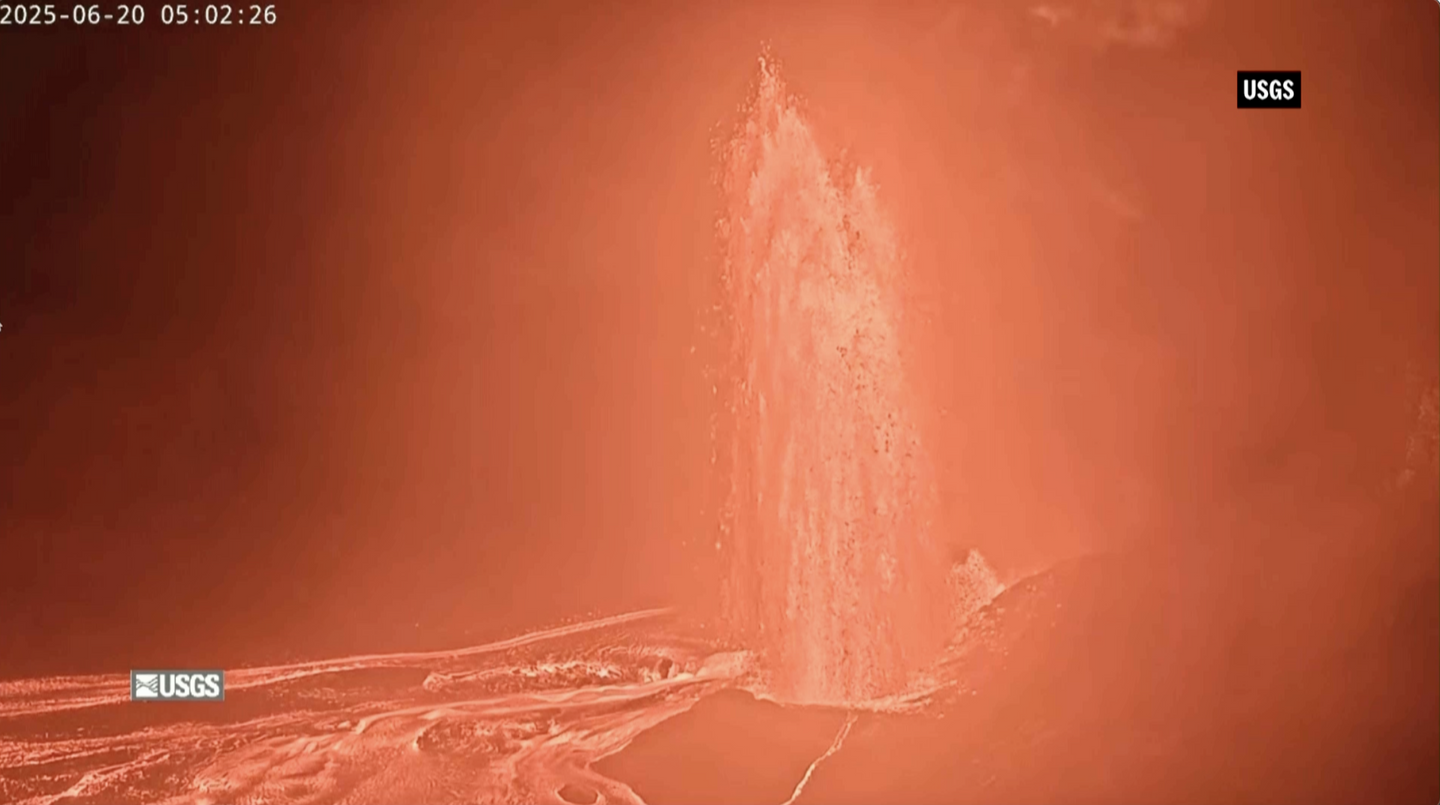
On Friday morning, the 26th episode of the ongoing eruption at Halemaʻumaʻu, the pit crater located within the Kīlauea Caldera at the summit of the volcano, produced spectacular lava fountains that reached impressive heights, as reported by the USGS’s Hawaiian Volcano Observatory.
One of the world’s most active volcanoes, Kilauea on Hawaii’s Big Island, began spewing lava from the north vent Friday, the latest event in an ongoing eruption that began almost six months ago.
Lava fountains reached vast heights as Hawaii’s Kilauea Volcano erupted, shooting lava fountains up to 1,000 feet into the sky, according to the U.S. Geological Survey (USGS) Hawaiian Volcano Observatory.
On Friday morning, the eruption’s 26th episode at Halemaʻumaʻu—located within Kīlauea Caldera at the summit of the volcano—produced massive lava fountains. Kilauea, one of the world’s most active volcanoes on Hawaii’s Big Island, began this eruption from the north vent on Friday as part of an ongoing event that started almost six months ago.
The lava fountains not only reached heights of more than 1,000 feet but also fed multiple lava streams. Scientists at the USGS’s Hawaiian Volcano Observatory indicated that the fountains might continue to reach even greater heights.
The return of lava fountaining at Kilauea’s Halemaʻumaʻu Crater marked the 26th occurrence since the eruption began on December 23.
Observations this morning reported that the lava fountains and flows from the crater’s north vent started around 1:40 a.m.
Scientists with the U.S. Geological Survey’s Hawaiian Volcano Observatory said the fountains were likely to go higher.







